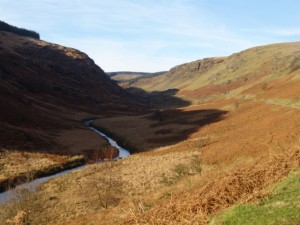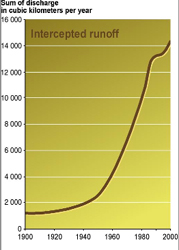 River ecosystems and their landscapes are the model system through which DURESS investigates the role of biodiversity in ecosystem service sustainability. River ecosystems deliver major services which contribute to life support, social well-being and prosperity including the provision of water and fish, the regulation of water quality, the support of adjacent ecosystems through supplies of energy and nutrients, and large value to culture, inspiration and recreation. Such services are best delivered probably when river catchments are managed sustainably. However, the lack of appropriate valuation of these services has favored river catchment management geared towards production of goods with high market values. The cost implications are large: in addition to its overall infrastructure value, the UK water industry is worth £10 billion per year with annual water treatment costs for potable supplies of £225 million.
River ecosystems and their landscapes are the model system through which DURESS investigates the role of biodiversity in ecosystem service sustainability. River ecosystems deliver major services which contribute to life support, social well-being and prosperity including the provision of water and fish, the regulation of water quality, the support of adjacent ecosystems through supplies of energy and nutrients, and large value to culture, inspiration and recreation. Such services are best delivered probably when river catchments are managed sustainably. However, the lack of appropriate valuation of these services has favored river catchment management geared towards production of goods with high market values. The cost implications are large: in addition to its overall infrastructure value, the UK water industry is worth £10 billion per year with annual water treatment costs for potable supplies of £225 million.

Catchment runoff is increasingly intercepted for human activities linked of he production of food and timber, from MEA 2003
The ecosystem service value of rivers was revealed clearly by the National Ecosystem Assessment (NEA), but the NEA also revealed that:
- River ecosystems deliver multiple functions and services that are undervalued
- There is good background knowledge on the response of river organisms to environmental change, but major gaps about their role in ecosystem services.
Specifically for upland river ecosystems:
- These high quality headwaters provide more than 80% of water abstraction in the UK
- Changes to headwaters permeate downstream to estuaries, transitional waters and coastal systems
- Rural upland areas are at risk from both land use development and climate change
- Rivers require an integrated physical, ecological and socio-economic perspective
- There is significant conservation importance through the EU Habitats Directive (93/43/EEC) and UK Biodiversity Action Plan
